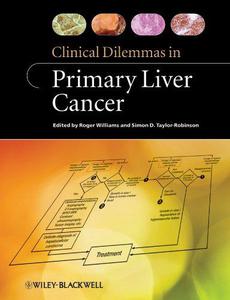 Clinical Dilemmas in Primary Liver Cancer By
Clinical Dilemmas in Primary Liver Cancer By2011 | 224 Pages | ISBN: 0470657979 | PDF | 4 MB
How do you look after the liver as well as the tumour? Is one scoring system in patient assessment more useful than another? Is microbubble ultrasound an advance in surveillance screening? Clinical Dilemmas in Primary Liver Cancer considers these and other questions in a highly practical, user-friendly format. Edited by Roger Williams and Simon Taylor-Robinson, two of the UK's top hepatologists and leading figures on liver cancer, this concise guide provides evidence-basedexpert guidance on subjects ranging from epidemiological risk factors and screening and surveillance strategies to diagnosis and treatment. Contributing authors, experts in particular areas in liver cancer treatment, know your daily clinical challenges because they share them. The six major sections of the book cover: · Learning from a worldwide perspective · Influence of tumour characteristics · Complexities of patient assessment and scoring systems · Choice of radiological diagnostic technique · Can treatment be tailored to the patient? · What does the future hold? Recent advances allowing early diagnosis and use of locoregional and systemic therapy, surgery, transplantation, and combination therapy may help to reverse the established pattern of patients presenting with advanced disease, and the authors carefully review these important developments. Clinical Dilemmas in Primary Liver Cancer is essential reading forall thoseinvolved in the care of patients with liver cancer, including established and trainee hepatologists and gastroenterologists, transplant surgeons,pathologists,and specialist hepatology nurses. Content: Chapter 1 Are Patterns and Prevalence Changing? (pages 1-10): Hashem B. El?SeragChapter 2 Why is the Tumour Different in Africa? (pages 11-17): Nimzing G. LadepChapter 3 Control by Vaccination: Asian and Taiwan Experience (pages 18-23): Jia?Horng KaoChapter 4 The view from the United Kingdom (pages 24-28): Shahid A. Khan, Mireille B. Toledano, Abigail Zabron, Mehtan Ahmed and Simon D. Taylor?RobinsonChapter 5 The view from the United States (pages 29-34): Hitoshi Maruyama and Arun J. SanyalChapter 6 New Challenges of the NAFLD and HIV Epidemics (pages 35-41): Quentin M. Anstee and Janice MainChapter 7 Controversies in Pathology (pages 43-52): Tania RoskamsChapter 8 Not to Forget the Unusual Tumour (pages 53-59): Bernard C. PortmannChapter 9 What can be Learned from Molecular Diagnostic Techniques and Genetic Signatures? (pages 60-64): Tariq Moatter and Saeed HamidChapter 10 Looking after the Liver as well as the Tumour (pages 65-72): Roger WilliamsChapter 11 Comparative Performances of Staging Systems for Hepatocellular Cancer: Early HCC Considerations (pages 73-80): Peter D. Peng and Timothy M. PawlikChapter 12 Rival Scoring Systems: Do they Offer more? (pages 81-90): Angelo Sangiovanni and Massimo ColomboChapter 13 Is it Possible to Detect Early Lesions Effectively? (pages 91-96): Ryota Masuzaki and Masao OmataChapter 14 What is the Value of Country?Based Surveillance Programmes? (pages 97-104): Peter OttChapter 15 Computed Tomography or Magnetic Resonance Imaging for the Diagnosis of Hepatocellular Carcinoma (pages 105-113): Wladyslaw GedroycChapter 16 Is Microbubble Ultrasound useful? (pages 114-117): Adrian LimChapter 17 Value of PET Scanning (pages 118-123): Tara D. Barwick, Imene Zerizer and Adil Al?NahhasChapter 18 Who could Benefit from Chemoembolisation? (pages 125-135): Gisele N'Kontchou, Olivier Seror and Michel BeaugrandChapter 19 Are Drug?Eluting Beads Worth using? (pages 136-141): Christopher N. Hacking and Pradesh KumarChapter 20 What is the Future of Image?Guided Radiofrequency Ablation for Hepatocellular Carcinoma? (pages 142-148): Riccardo LencioniChapter 21 Alternative Ablation Techniques for Hepatocellular Carcinoma (pages 149-153): John KaraniChapter 22 Justification for Sorafenib and Chemotherapy (pages 154-159): Philip J. JohnsonChapter 23 When to Consider Surgery? (pages 160-167): Emmanuel Melloul, Mickael Lesurtel and Pierre?Alain ClavienChapter 24 Transplant Considerations (pages 168-175): Myron SchwartzChapter 25 Dipstick Markers for Diagnosis: Feasible or not? (pages 177-183): Mohamed I. F. Shariff and Simon D. Taylor?RobinsonChapter 26 Targeted Gene Therapy for Hepatocellular Carcinoma: A Reality? (pages 184-190): Christopher Binny, Marco Della Peruta and Amit C. NathwaniChapter 27 Is Immune Modulation a Possibility? (pages 191-198): Tim F. Greten and Firouzeh KorangyChapter 28 Systemic Therapy for Hepatocellular Carcinoma: Future Directions (pages 199-211): Daniel H. Palmer and Matthew E. Cramp
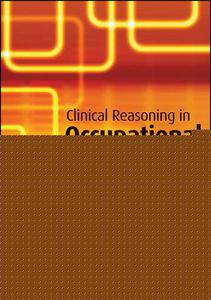


![S.T.A.L.K.E.R. 2 / STALKER 2: Heart of Chornobyl - Ultimate Edition (2024) [+UPDATE 23.12.2024 - v1.1.3] ElAmigos / Polska wersja językowa](https://i.postimg.cc/Zqd8RWGY/UZG8PBE.jpg)





































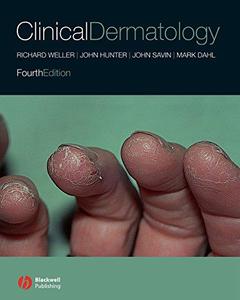

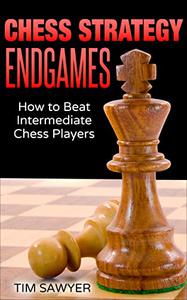



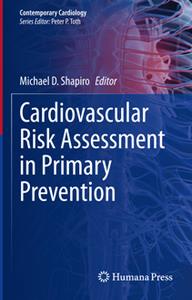







![David Gilmour - Luck and Strange (2024) [FLAC]](https://i.imgur.com/everaBc.jpeg)
![Męskie Granie Orkiestra - Męskie Granie 2024 (2024) [FLAC]](https://i.imgur.com/FAyOxrM.jpeg)
![The Rolling Stones - Hackney Diamonds (2023) [FLAC]](https://i.imgur.com/wCkyyUN.jpg)
![Lady Gaga - Harlequin (2024) [FLAC]](https://i.imgur.com/dcgIA8D.jpeg)
![Natalia Kukulska - Dobrostan (2024) [FLAC]](https://i.imgur.com/bdljG3O.jpeg)
![Kaśka Sochacka - Ta druga (2024) [FLAC]](https://i.imgur.com/hORQKvn.jpeg)
![Kuba Sienkiewicz - Pani Bóg (2024) [FLAC]](https://i.imgur.com/qijCx8Z.jpeg)
![Lanberry - Heca (2024) [FLAC]](https://i.imgur.com/8P7QfeR.jpeg)
![Sara James - PLAYHOUSE (2024) [FLAC]](https://i.imgur.com/m4f8OKg.jpeg)
![Grzegorz Hyży - EPILOG (2024) [FLAC]](https://i.imgur.com/8DA2sBr.jpeg)
![Myslovitz - WIECZORAMI CHŁOPCY WYCHODZĄ NA ULICE (2024) [FLAC]](https://i.imgur.com/l9mMtIG.jpeg)
![Krzysztof Zalewski - ZGŁOWY (2024) [FLAC]](https://i.imgur.com/vh48RAc.jpeg)
![Krzysztof Cugowski - Wiek to tylko liczba (2024) [FLAC]](https://i.imgur.com/SBzgqe2.jpeg)
![Nosowska - Kasia i Błażej (2024) [FLAC]](https://i.imgur.com/mObvVXQ.jpeg)
![sanah - Pianinkowe Kaprysy (2024) [FLAC]](https://i.imgur.com/pVjjPAa.jpeg)
![Kwiat Jabłoni - Pokaz slajdów (2023) [FLAC]](https://i.imgur.com/diERHfZ.jpg)
![Robert Cichy - Spacer po Warszawie (2024) [FLAC]](https://i.imgur.com/ixleU9o.jpeg)
![Viki Gabor - Terminal 3 (2024) [FLAC]](https://i.imgur.com/Q1KCnDs.jpeg)
![Sanah - Kaprysy (2024) [FLAC]](https://i.imgur.com/71OZm4h.jpeg)
![Męskie Granie Orkiestra - Męskie Granie 2023 (2023) [FLAC]](https://i.imgur.com/U4YHo8d.jpg)




